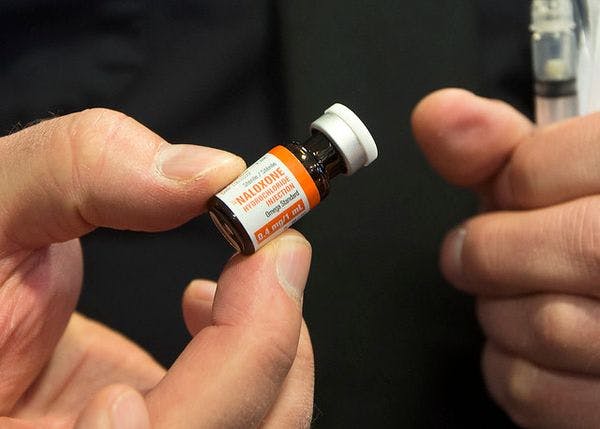Flickr CC Premier of Alberta
Next-generation single-dose antidotes for opioid overdoses
By American Chemical Society
The U.S. opioid epidemic is being driven by an unprecedented surge in deaths from fentanyl and other synthetic opiates. Fentanyl's powerful effects are long-lasting, and even tiny amounts of the drug can lead to an overdose. Antidotes, such as naloxone, do not last long enough in the body to fully counter the drug, requiring repeated injections. Now, scientists report that they are developing single-dose, longer-lasting opioid antidotes using polymer nanoparticles.
The researchers will present their results today at the American Chemical Society (ACS) Spring 2019 National Meeting & Exposition.
"We became interested in this problem while trying to make non-addictive pain medications," Saadyah Averick, Ph.D., says. "In that course of research, we realized the limitations of current opioid antidotes."
According to the U.S. Centers for Disease Control, opioids, such as heroin, oxycodone and fentanyl, were implicated in more than 47,000 deaths from overdose in 2017. These drugs all bind to the mu opioid receptor (MOR) in the brain, which is the body's natural pleasure receptor, explains Averick, a scientist at Allegheny Health Network Research Institute. "The drugs bind, turn on the receptor and stimulate a euphoric feeling. The synthetic opioids, such as fentanyl, turn this on really, really well," he says.
And their effects are long-lasting. Fentanyl, which is much stronger than morphine, another opioid, can be absorbed into fat tissue, which protects it from being metabolized right away. It is then slowly released from this tissue, causing effects for several hours. Naloxone, an MOR antagonist and antidote, only stays in the system for about 30 minutes to an hour, however. Because of this mismatch, repeated doses are required to help the patient recover. But not all patients want to undergo the entire treatment course, and they can end up succumbing to an overdose after the naloxone is metabolized.
To overcome this challenge, Averick and his colleagues developed a drug delivery system intended to ensure that a steady, sufficient dose of antagonist is delivered over 24 hours. The researchers reacted naloxone, which has a multi-ringed chemical structure, with polylactic acid (PLA), thus creating a naloxone polymer. They then prepared covalent nanoparticles (CNPs) by adding this polymer to a solution of polyvinyl alcohol. They used a variety of analytical methods to purify and analyze the resulting particles, which are 300 nanometers in diameter.
